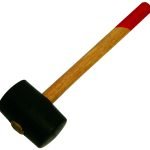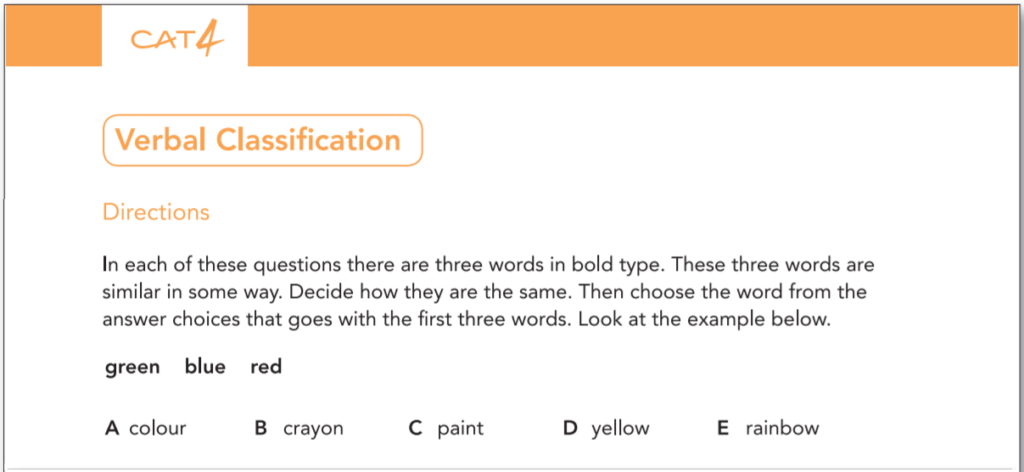The Non-Verbal Figure Analysis Test is one of the eight sub-tests within the CAT4 (Cognitive Abilities Test) assessment battery, specifically designed to measure a child’s ability to analyze, interpret, and manipulate visual patterns and abstract figures. This test assesses non-verbal reasoning skills, helping to determine how well a student can recognize relationships between shapes, understand transformations, and identify logical sequences in visual information.
Figure analysis is a critical component of the non-verbal reasoning section in the CAT4 test. This segment assesses a student’s ability to examine and interpret visual information, identifying underlying patterns, relationships, and rules within geometric shapes, sequences, or diagrams. Students are required to analyze figures, recognize similarities and differences, and apply logical reasoning to predict or classify visual data.
This skill is essential for problem-solving, spatial reasoning, and understanding complex visual structures, making it a key indicator of cognitive flexibility and analytical thinking. These abilities are essential for subjects like math, science, engineering, and design, where logical reasoning and spatial understanding are critical.
Practicing CAT4 Non-Verbal Figure Analysis questions can help improve academic performance and enhance the ability to spot similarities, differences, and rules governing the transformations of images in both 2d and 3d planes. Strong performance in this test indicates an aptitude for solving complex, visual-based problems, which are valuable skills for academic success and cognitive development.
Non-verbal figure analysis plays a pivotal role not only in visual interpretation and manipulation but also in understanding non-verbal cues. Mastering non-verbal cues helps improve emotional intelligence and is essential for effective communication, building connections, and succeeding in professional and social settings. It can be developed through practice and reflection and is a foundational skill which is useful in so many areas of life.
What is Non-Verbal Figure Analysis?
Non verbal figure analysis is the process of interpreting visual information without relying on verbal cues and involves identifying patterns, relationships, and shared characteristics in visual data such as shapes, diagrams, and patterns. This foundational skill is a core component of non-verbal reasoning and is assessed is the CAT4 (Cognitive Abilities Test).
Key Components of Non-Verbal Figure Analysis:
- Pattern Recognition: Identifying recurring themes or sequences in visual data.
- Spatial Reasoning: Understanding the relationships between objects or shapes in both 2d and possible 3d.
- Logical Thinking: Drawing conclusions based on visual information and manipulation of images.
Importance of Non-Verbal Figure Analysis in Education and Beyond
Non-verbal figure analysishas far-reaching implications from putting together furniture to understanding evidence in a crime scene. Here’s why it matters:
1. Academic Success
Non-verbal reasoning skills, including figure analysis and figure classification, are crucial for excelling in subjects like mathematics, physics, and engineering. These type of subjects require the interpretation of visual data, such as graphs, charts, and diagrams. By developing these skills, students can improve their problem-solving abilities and achieve much better academic results.
2. Real-World Applications
- Healthcare: Medical professionals rely on this skill to interpret scans like X-rays and MRIs, enabling accurate diagnoses.
- Everyday Life: From organizing spaces to reading maps, non-verbal reasoning simplifies daily tasks.
- Technology: Non-verbal figure analysis is used in image recognition and artificial intelligence to develop advanced models.
3. Professional Growth
Fields such as architecture, graphic design, and engineering require strong visual-spatial skills. Non-verbal figure analysis enables professionals to interpret blueprints, design innovative solutions, and solve complex problems.
How Non-Verbal Figure Analysis Enhances Communication
Non-verbal cues are an integral part of face-to-face communication. Understanding these cues can significantly improve interpersonal interactions. Similar to figure classification figure analysis provides the understanding of non-verbal cues and the messages they are communication Here are some key non-verbal communication elements:
- Facial Expressions: Facial expressions are powerful indicators of emotions. Recognizing and being able to analyse the smiles, frowns, or raised eyebrows of the other person helps you to gauge their emotional state.
- Body Language: Posture, gestures, and movements convey confidence, nervousness, or indifference and an appreciating how the other person is feeling helps you to determine how to communicate appropriately to have a productive conversation.
- Eye Contact: Eye contact and eye movement can reflect levels of engagement and emotional state.
Practical Applications of Non-Verbal Figure Analysis
- Deception Detection: Non-verbal cues like micro-expressions, changes in body language, along with inconsistencies in tone can help detect deception. This skill is valuable in fields like law enforcement and psychology.
- Emotional Intelligence: Understanding non-verbal cues enhances emotional intelligence, enabling individuals to respond empathetically and build stronger relationships.
- Professional Settings: In sales, negotiation, and leadership, decoding non-verbal communication helps tailor approaches to meet the emotional needs of others.
How to Improve Non-Verbal Figure Analysis Skills
- Practice Figure Classification: Engage in activities that require categorizing visual information, such as puzzles, pattern recognition games, and diagram analysis.
- Enhance Spatial Reasoning: Activities like assembling furniture, reading maps, and solving spatial puzzles can improve spatial reasoning skills.
- Develop Logical Thinking: Practice solving logic-based problems and visual puzzles to strengthen your ability to draw conclusions from visual data.
- Observe Non-Verbal Cues: Pay attention to facial expressions, body language, and gestures in everyday interactions to improve your ability to interpret non-verbal communication.
- Use CAT4 Practice Tests: The CAT4 test is an excellent tool for developing non-verbal reasoning skills. Practicing figure classification and other sub-tests can boost confidence and performance.
Conclusion
Non-verbal figure analysis is a foundational cognitive skill that enhances abilities, improves communication, and has significant real-world applications. This skill is a good indicator of potential academic success and indicator of a child’s potential. Whether preparing for the CAT4 test or looking to improve non-verbal reasoning skills, practicing cognitive tests in figure analysis and figure classification will provide a strong foundation for future success.
To learn more about the other sub-tests that make up the CAT4 assessment, click below:
- Non-Verbal Figure Classification
- Non-Verbal Figure Analysis
- Non-Verbal Figure Matrices
- Non-Verbal Figure Recognition
- Numerical Analogies
- Numerical Series
- Verbal Analogies
- Verbal Classification
If you haven’t already, read my story by clicking here on how I helped my son pass with flying colours.





